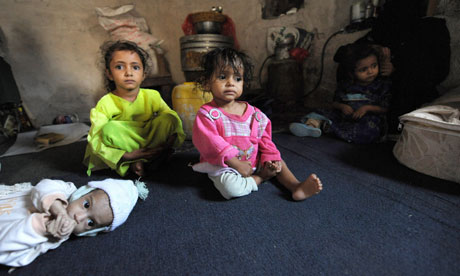By Emily Schneider
Impunity Watch Reporter, Middle East Desk
DAMASCUS, Syria – The Syrian opposition has reported that the Syrian government used ‘barrel bombs’ this past weekend. ‘Barrel bombs’ are large drums that are filled with explosives, oil, and pieces of steel. The crude explosives are dropped from helicopters or low-flying jets and usually result in craters close to seven meters deep where they fall. Their purpose is not only to destroy its target, but also to cause terror and permanently maim its victims.
Based on eye-witness accounts and amateur videos, a large number of people were killed on Saturday when a barrel bomb was dropped by a low-flying military aircraft in Aleppo. Macit Abdunnur, a local activist, claimed that a residential building was destroyed by the blast and several corpses of women and children have been pulled from the rubble so far.
“The sound was like nothing else I’ve ever heard. It was an almighty whoosh,” Mohammed Ibrahim, a rebel fighter who got caught by the explosion, told the Telegraph. He lost his cousin in the blast and his own eardrums were perforated by the noise. He told reporters, “I was lucky I was standing behind a corner, but I was still knocked off my feet. When I came round my ears were bleeding.”
There have been amateur videos posted online of the bombs exploding in Aleppo, although news agencies have not been able to independently verify the location of the videos. There are also videos of the helicopters and military planes hovering above targets while the crew pushes the barrel bomb out of the door.
The recent use of barrel bombs follows Syrian government’s use of indiscriminate shelling and bombing in an attempt to quell the opposition for the past several weeks. These recent indiscriminate strikes constituted deliberate targeting of civilians, far from the front lines of the battle. Some opposition members speculated that the recent use of a barrel bomb is in response to the opposition’s attack on the regime’s security buildings in the Aleppo area on Friday.
A spokesman for the Local Coordination Committee in northern Aleppo said that the barrel bombs have been used in at least two areas of the city previous to this incident.
“How long are we going to sit and watch while an entire generation is being wiped out by random bombardment and deliberate mass targeting?” asked Turkish Foreign Minister Ahmed Davutoglu.
For further information, please see:
CNN – Syria Accused of Using ‘Barrel Bombs’ – 11 Sept. 2012
Turkish Weekly– Syrian Opposition Says Military Jets Drop “Barrel Bombs” on Aleppo – 10 September 2012
Israel National News – Video: Syria Drops New ‘Barrel Bomb’ on Aleppo – 2 Sept. 2012
Telegraph – Syrian Regime Deploys Deadly New Weapons on Rebels – 31 August 2012




